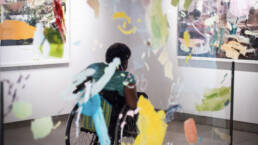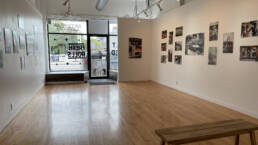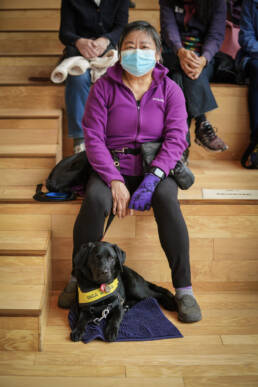
Creating Inclusivity: 8 Achievable Tips to Begin or Enhance Your Festival Access Journey
May 26, 2023
Relaxed Performance and Disability Access Consultant Rachel Marks shares advice on making your events more accessible.
Over the past few years there has been a move towards making arts and culture events more accessible for disabled audiences. Access is a way to welcome new audiences to your work; to create safe spaces and experiences for those who may have previously felt excluded or unsafe in artistic spaces; and work towards inclusion. But access often feels huge, expensive or hard to achieve. In an effort to do the right thing and provide access, we are often overwhelmed and don’t know where to start.
Here are my top tips for working towards greater accessibility and to help you begin your access journey:
1. Build it into your budget
While it may not be possible this year, moving forward, include a line item on your budget for accessibility. And do some research – if you want to offer ASL interpretation, find out what local ASL interpreters charge. Don’t guess at fees, do your best to find out costs so you can plan for them.
2. Engage Community Consultants
Check-in with those in the know! A Community Consultant is someone with lived experience. If you are trying to find ways to welcome the Blind community to your event, who better to ask than a member of the Blind community? Reach out to community members to find out what access points they need and what their suggestions are on how you can meet those needs. And remember, work them into your budget, they should be paid for their knowledge and time.
3. Drop the Industry Lingo
I like big words and I cannot lie – but it is plain language for the win! Avoid language that could be considered industry lingo. Instead, use language that can be understood by the people you are trying to reach. Use plain language in your access documents, customer service approaches and on your signage. Plain language should never feel condescending, and it should always be empowering.
4. Utilize Alt Text and Image Descriptions
All of your social media posts and every image on your website should have both Alt Text and Image Descriptions, so plan for your marketing and designs to include them. Alt Text is often limited to 100 characters (sometimes less) whereas image descriptions offer you a chance to describe more to your audience.
5. Create Venue Guides
No matter where your festival is held (in a theatre, in a field or even on a boat), Venue Guides allow you to describe the space to your audience. You should treat your Venue Guide like a visitor’s guide – no piece of information is too small to include. Focus on parking, doorways/entrances, terrain/flooring, seating, washrooms and routes (or ways to travel from spot to spot). It’s easier than it sounds – with a good smartphone camera and some attention to detail, you can put together a comprehensive Venue Guide.
6. Build Quiet Spaces
If you can, set up a Quiet room/space. This is a space with some chairs, perhaps some floor cushions and blankets, water and soft lighting. These spaces allow those who need a break due to overstimulation or anxiety a place to go and reset. Think of them as a chill lounge where people can decompress and get ready to rejoin the crowd.
7. Maximize Mobility Seating Areas
You’ve probably already thought of wheelchair seating areas. But how many friends, all wheelchair or mobility device users, can sit together at your event? If you can provide space for several device users to be together, please provide it. All too often, folks who use mobility devices are placed at the back or far sides of a stage. Then, when groups of friends wish to attend an event together, they are often seated separately. Providing spaces where more than one or two wheelchairs can fit will make a huge impact on those attending.
8. Be Transparent
Celebrate what you can offer, and be upfront about what you can’t. Help your audience make informed decisions about attending your event by openly communicating both what you can provide and what you can’t. If you have seating that is wheelchair accessible – let people know! But if you don’t have wheelchair accessible washrooms, you also need to let them know that. Give your audience all the information they need to decide whether this will be a successful event for them to attend.
I hope these tips help you on your access journey. And remember, think of access as the act of setting people up for success and managing expectations in order to build a beautiful relationship with a new audience.
Rachel Marks is a Relaxed Performance and Disability Access Consultant. She works with arts and culture companies and organizations to welcome d/Deaf and Disabled audiences, artists and administrators to their spaces and their work.
Also read: Access to the Arts by Lisa Bendall



